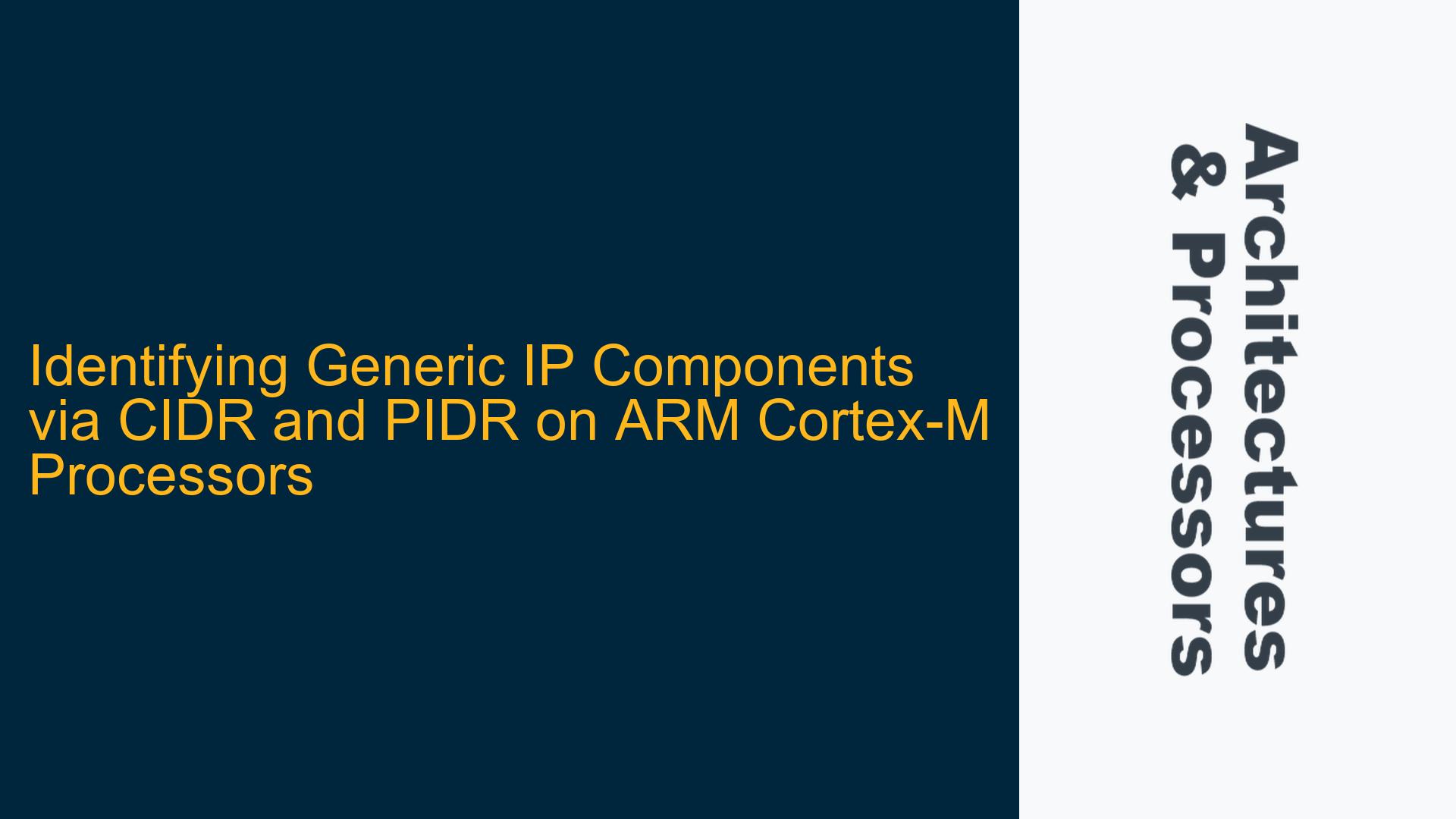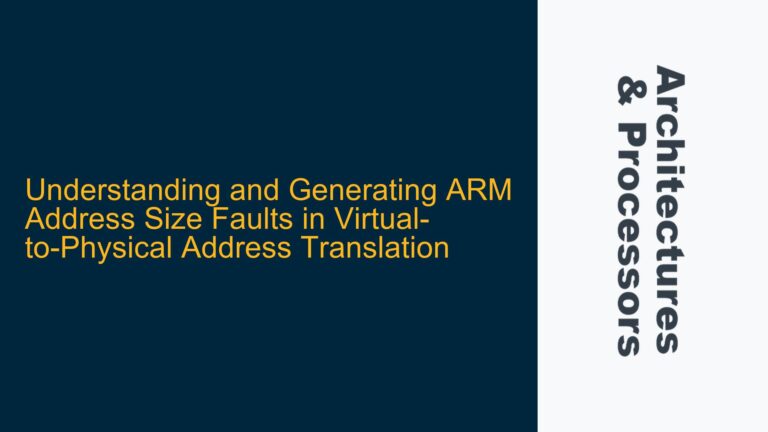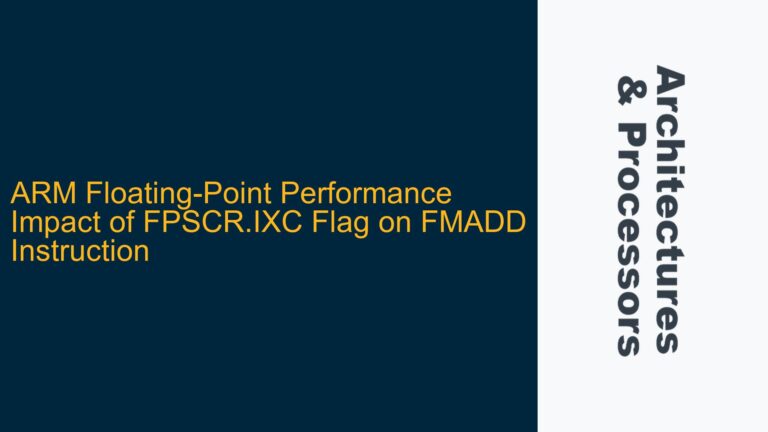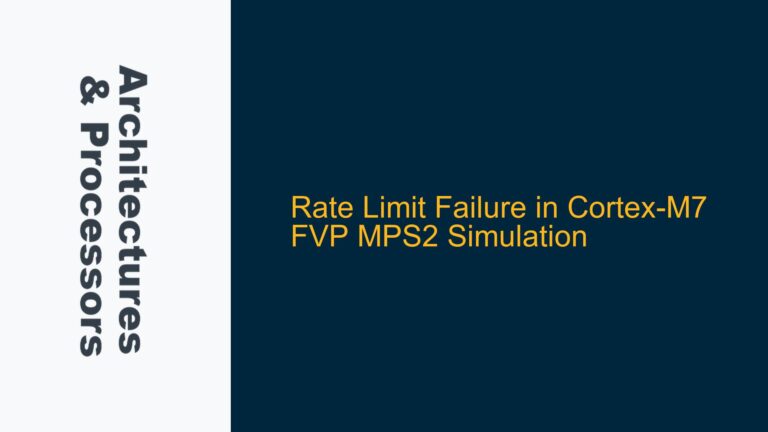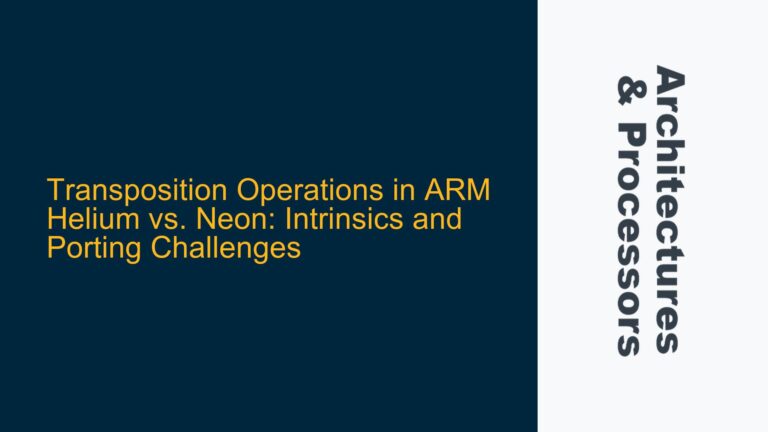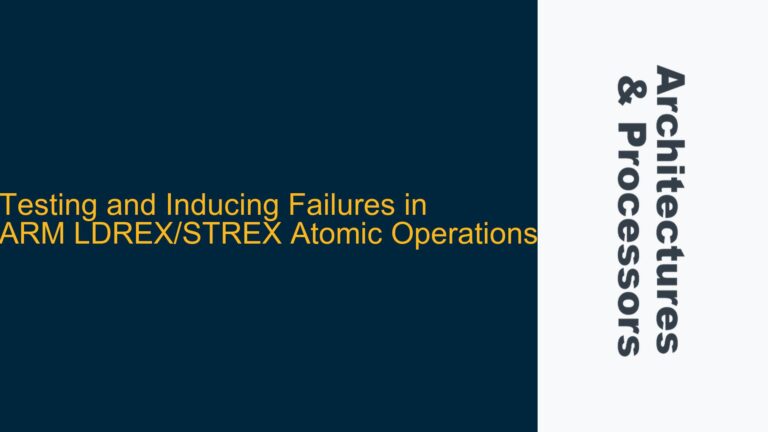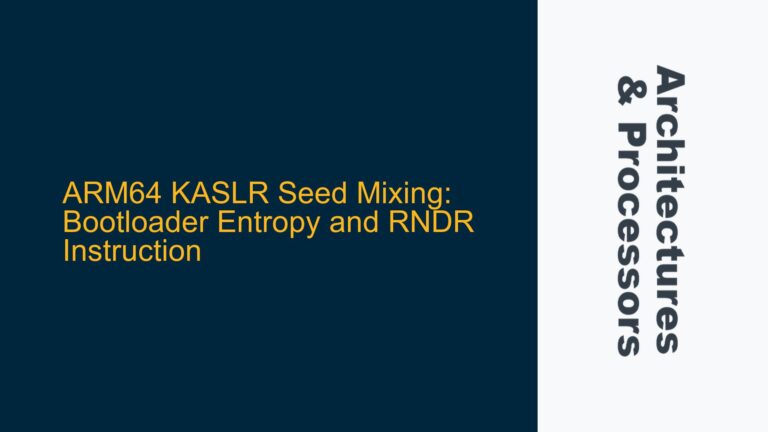ARM Cortex-M4 and Cortex-M0 CIDR/PIDR Decoding Challenges
When working with ARM Cortex-M series processors, particularly the Cortex-M4 and Cortex-M0, identifying Generic IP components through Component Identification Registers (CIDR) and Peripheral Identification Registers (PIDR) can be a complex task. The CIDR and PIDR registers are essential for distinguishing between CoreSight components and Generic IP components. However, the documentation surrounding these registers is often scattered across multiple documents, making it difficult to correlate specific PartNumbers with their corresponding components. For instance, the Cortex-M4 System Control Space (SCS) is identified by a PID.PartNumber of 0x00D, but this information is not readily available in a single, consolidated source. This lack of centralized information can lead to significant delays in development, especially when creating custom debuggers or low-level firmware.
The CIDR and PIDR registers are part of the ARM CoreSight architecture, which provides a standardized way to access debug and trace components. The CIDR typically contains information about the component class, while the PIDR provides details about the specific implementation, including the PartNumber. In the case of the Cortex-M4, the CIDR/PIDR values for the System Control Space (SCS) are 0xB105E00D and 0x000BB00C, respectively. The SCS is a critical component that includes the Nested Vectored Interrupt Controller (NVIC), System Timer (SysTick), and other system control registers. Identifying these components correctly is crucial for debugging and system configuration.
The challenge lies in the fact that the ARM documentation, while comprehensive, is spread across multiple documents, including the ARM Architecture Reference Manual, the CoreSight Technical Reference Manual, and various device-specific datasheets. This fragmentation makes it difficult to find a single source of truth for CIDR and PIDR values. Additionally, the PartNumber field in the PIDR is often not explicitly documented, requiring developers to infer its meaning from context or through trial and error.
Memory Mapping and Documentation Gaps in ARM CoreSight Architecture
One of the primary reasons for the difficulty in identifying Generic IP components via CIDR and PIDR is the lack of centralized documentation that maps PartNumbers to specific components. The ARM CoreSight architecture is designed to be highly modular, allowing for a wide range of components to be integrated into a system. However, this modularity also means that the documentation is often divided into multiple documents, each focusing on a specific aspect of the architecture. For example, the CoreSight Technical Reference Manual provides detailed information about the CoreSight components, but it does not always include a comprehensive list of PartNumbers for Generic IP components.
Another issue is that the PartNumber field in the PIDR is not always explicitly documented. In some cases, the PartNumber may be listed in a device-specific datasheet, but this information is not always easy to find. For instance, the PartNumber 0x00D, which identifies the System Control Space (SCS) in the Cortex-M4, is not explicitly mentioned in the CoreSight Technical Reference Manual. Instead, this information must be inferred from other sources, such as the ARM Architecture Reference Manual or the device-specific datasheet for the Cortex-M4.
The memory mapping of these components also adds to the complexity. The System Control Space (SCS) is typically mapped to a specific address range in the memory map, but this address range can vary between different Cortex-M processors. For example, the SCS in the Cortex-M4 is mapped to the address range 0xE000E000 to 0xE000EFFF, while in the Cortex-M0, it is mapped to 0xE000E000 to 0xE000EFFF as well. However, the exact address range and the components included in the SCS can vary depending on the specific implementation of the processor.
Implementing CIDR and PIDR Decoding Strategies for ARM Cortex-M Processors
To effectively identify Generic IP components via CIDR and PIDR on ARM Cortex-M processors, developers need to adopt a systematic approach that combines information from multiple sources. The first step is to consult the ARM Architecture Reference Manual for the specific Cortex-M processor being used. This manual provides detailed information about the memory map, including the address ranges for the System Control Space (SCS) and other critical components. It also includes information about the CIDR and PIDR registers, although the PartNumber field may not be explicitly documented.
Next, developers should refer to the CoreSight Technical Reference Manual for information about the CoreSight components. This manual provides detailed information about the CIDR and PIDR registers, including the format of these registers and the meaning of the various fields. However, as mentioned earlier, the PartNumber field may not be explicitly documented, so developers may need to infer its meaning from context.
In addition to these manuals, developers should also consult the device-specific datasheet for the Cortex-M processor being used. This datasheet may include additional information about the CIDR and PIDR registers, including the PartNumber field. For example, the datasheet for the Cortex-M4 may include a table that maps PartNumbers to specific components, such as the System Control Space (SCS).
Once the necessary information has been gathered, developers can implement a decoding strategy that uses the CIDR and PIDR registers to identify Generic IP components. This strategy should include the following steps:
-
Reading the CIDR and PIDR Registers: The first step is to read the CIDR and PIDR registers for the component being identified. The CIDR register provides information about the component class, while the PIDR register provides information about the specific implementation, including the PartNumber.
-
Decoding the CIDR Register: The CIDR register typically includes fields for the component class, the designer, and the revision. The component class field can be used to determine whether the component is a CoreSight component or a Generic IP component. The designer field identifies the company that designed the component, and the revision field provides information about the version of the component.
-
Decoding the PIDR Register: The PIDR register includes fields for the PartNumber, the designer, and the revision. The PartNumber field is the key to identifying the specific component. If the PartNumber is not explicitly documented, developers may need to infer its meaning from context or through trial and error.
-
Cross-Referencing with Documentation: Once the PartNumber has been decoded, developers should cross-reference it with the documentation to identify the specific component. This may involve consulting the ARM Architecture Reference Manual, the CoreSight Technical Reference Manual, and the device-specific datasheet.
-
Implementing a Lookup Table: To streamline the identification process, developers can implement a lookup table that maps PartNumbers to specific components. This lookup table can be based on information gathered from the documentation and can be updated as new components are identified.
By following these steps, developers can effectively identify Generic IP components via CIDR and PIDR on ARM Cortex-M processors. This approach requires a thorough understanding of the ARM CoreSight architecture and the ability to navigate the fragmented documentation. However, with careful attention to detail and a systematic approach, developers can overcome these challenges and successfully identify the components needed for their projects.
In conclusion, identifying Generic IP components via CIDR and PIDR on ARM Cortex-M processors is a complex task that requires a deep understanding of the ARM CoreSight architecture and the ability to navigate fragmented documentation. By adopting a systematic approach that combines information from multiple sources, developers can effectively decode the CIDR and PIDR registers and identify the components needed for their projects. This approach not only streamlines the development process but also ensures that the components are correctly identified, leading to more reliable and efficient system implementations.
